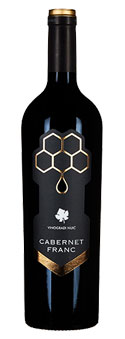Have you ever wondered why a Magnum bottle?
Magnum wines are ideal for larger gatherings, they are aesthetically elegant and impressive for your guests. …
Wines poured into these bottles mature better and slower and taste consistently better than when matured in standard bottles.
Magnum is the equivalent of two standard wine bottles (1.5 l). Since each standard bottle contains five glasses of wine, it is not extravagant to suggest a bottle for a table of four guests – this results in two and a half glasses of wine per person. Up to 10 guests can get a glass of wine from a magnum bottle.
Magnum packaging has its advantages. Although the bottle itself doubles, the size of the cork is the same as with a standard bottle. The caps are not completely hermetically sealed, over time a small amount of oxygen penetrates the bottle and as it ages it develops aromas. Magnum bottles expose twice the amount of wine to about the same amount of oxygen as 0.75 l bottles.
Older vintages of wine in magnum are likely to be in better condition than those in 750-milliliter bottles.
Champagne responds well to filling in Magnum packaging. As a result of the slow aging process, many champagne producers will release “magnums” later than standard-sized bottles, giving wine lovers access to older, more complex wines.
The only disadvantages of magnum bottles are that they are likely to be more expensive than two standard size bottles of the same wine, due to increased production costs.
Not every winery will necessarily include Magnum packaging in its selection.
"A Magnum bottle of wine is the perfect size for two people if one of them doesn't drink."
The effect of oxygen is less in a large bottle. Exposure of wine to oxygen during its development can have a beneficial effect on wine. Glass packaging protects the wine from unwanted oxidation until the bottle is opened, but this should not be approached blindly because the small amount of oxygen that penetrates the cork is the key to wine aging.
This small amount of oxygen causes micro-oxidation and the oxygen interacts with the chemical properties of the wine, phenols and tannins. Slow oxidation during aging reduces the bitterness of the wine, emphasizes the aromas of the wood and softens the tannins.
Wine that ages more slowly has more complex aromas. The part of the wine that is missing so that the bottle is full to the brim creates a space that we call ullage.
Ullage in magnum gives a similar ratio of wine and oxygen surface area as in an ordinary bottle, but the amount of oxygen-absorbing wine is twice as high.
It’s no secret that Magnum gives new dimension to wine.
Is this the reason for the higher price of Magnum packaging?
Magnum bottles in production cost more than a standardized 0.75 bottle, the glass is thicker and the production of the bottle has a special approach. The storage of magnum bottles also influences the decision of wineries to include them in their offer, it is necessary to plan the space and consider the transport and final packaging of such a product, which all affects the price.
In general, top quality red wines are usually poured into Magnum bottles, which take time for all aromas to develop and stand out.

Magnum Cabernet Franc from Nuić Vineyards!
Cheers! Nuić Vineyards


Recent Comments